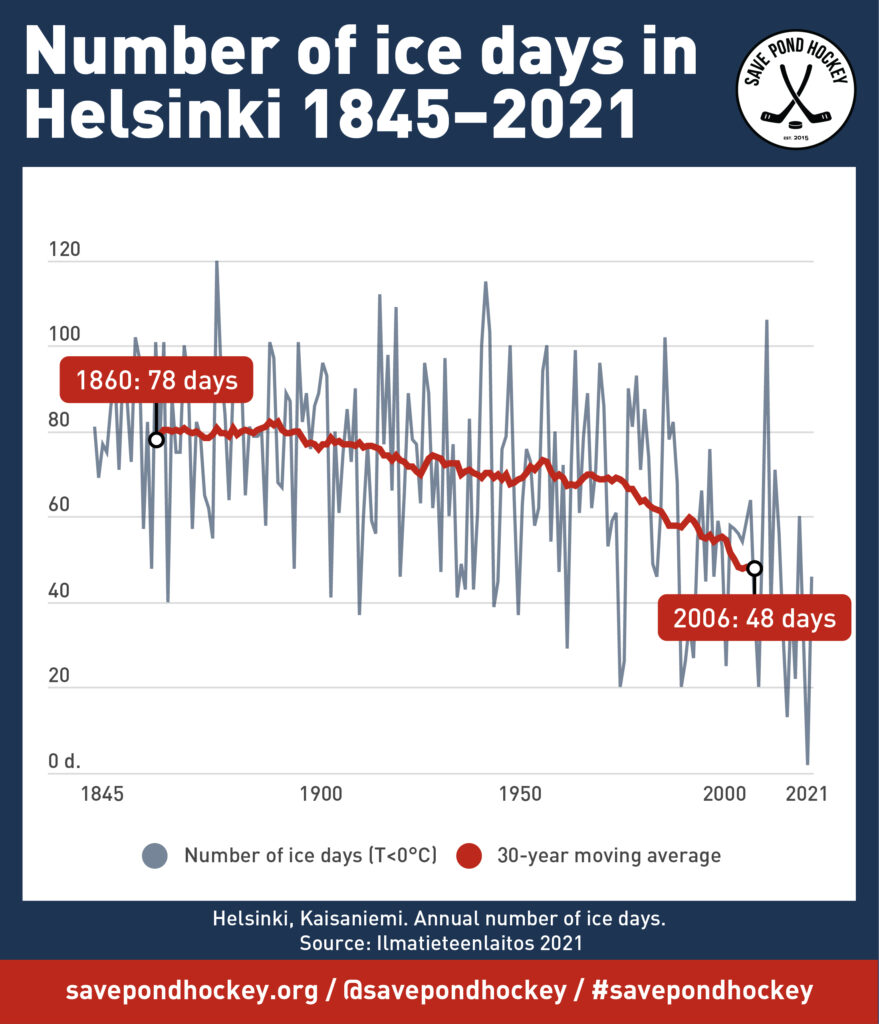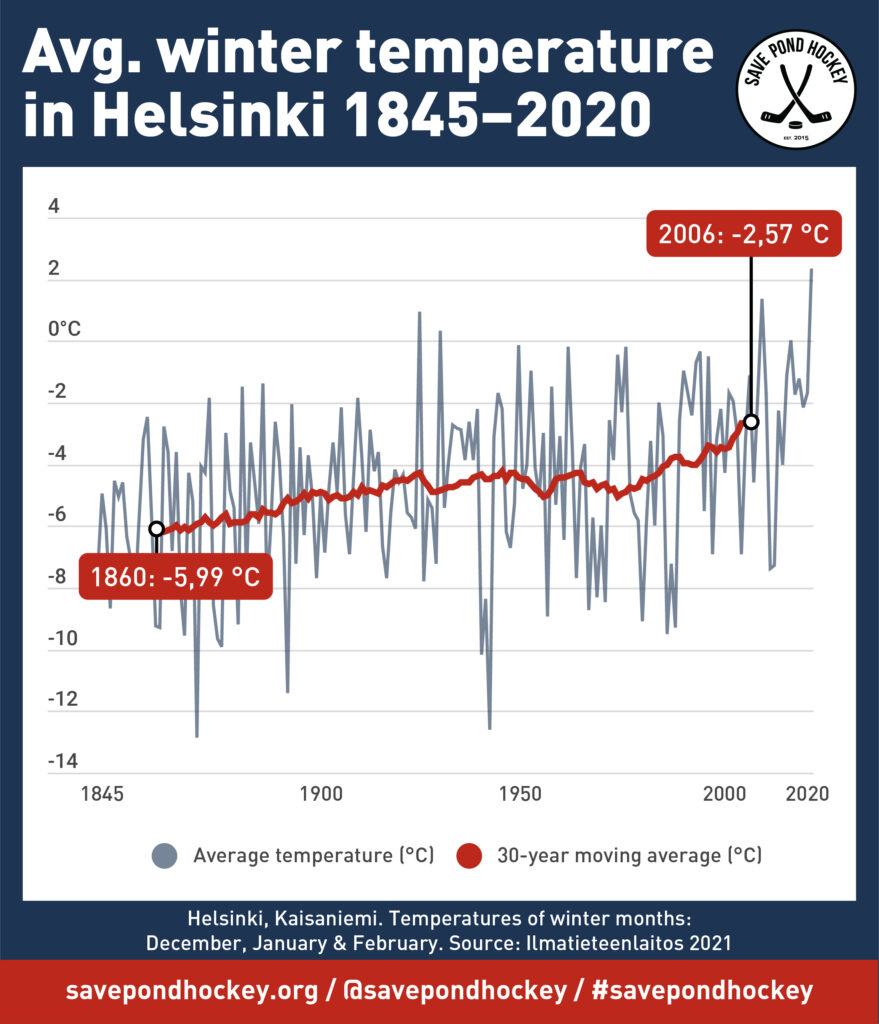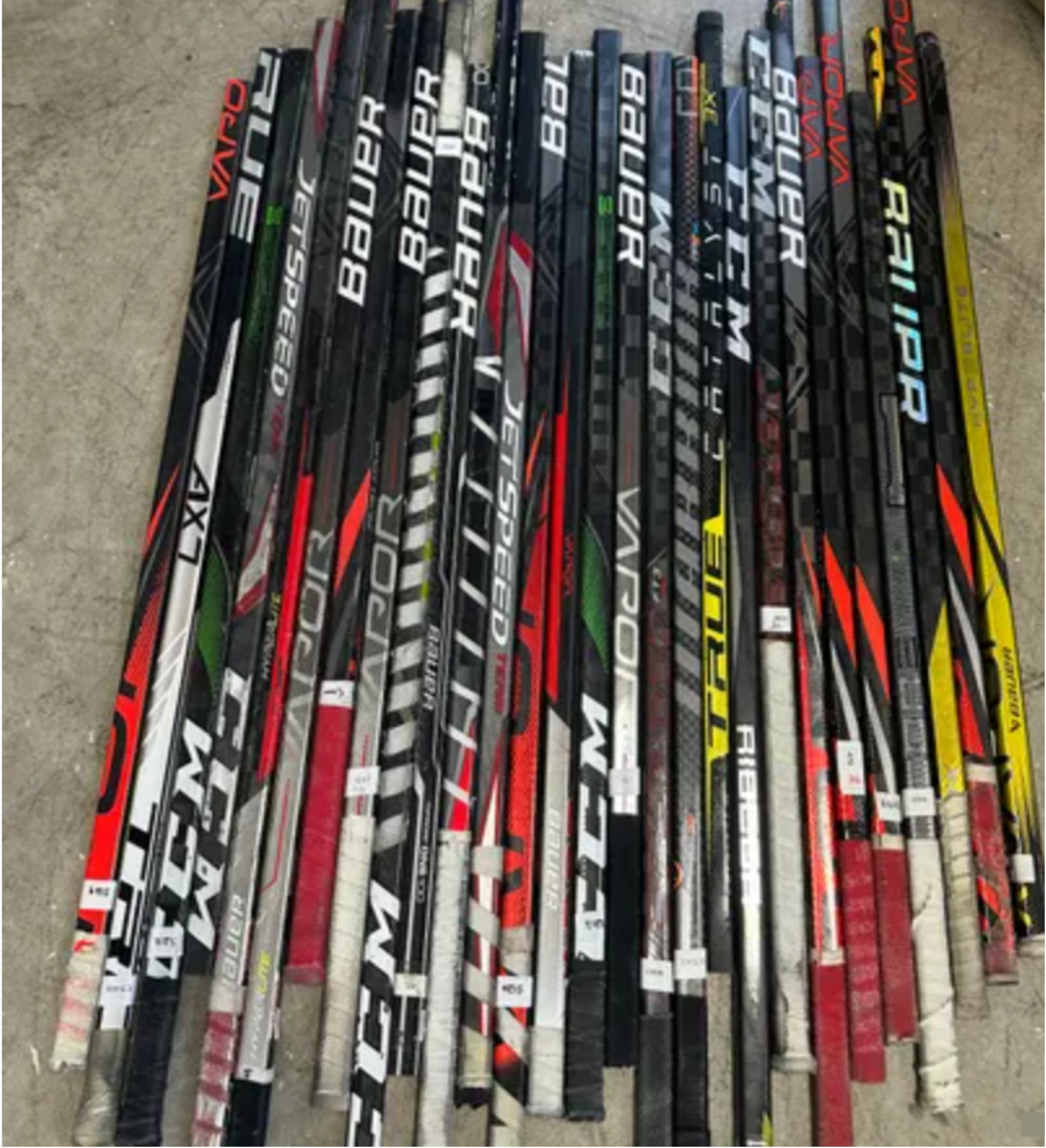Hockey is a fast-paced, high-intensity sport—but behind the thrill of the game lies an inconvenient truth: hockey gear has a massive sustainability problem. From energy-intensive production to short lifespans and excessive waste, the industry lags behind in environmental responsibility. Players, brands, and consumers must rethink how equipment is made, used, and disposed of.
The Sustainability Issues in Hockey Gear
1. Short Product Lifecycles & Disposable Gear Culture
Modern hockey equipment—especially sticks—is not built to last. Brands focus on ultra-lightweight performance rather than durability, leading to:
- Frequent Breakage: Composite sticks, like the Bauer Vapor HyperLite, CCM JetSpeed FT6 Pro, and Warrior Covert QR5 Pro, are made of layered carbon fiber and break within weeks or months.
- Limited Warranties: Most sticks have a 30-day warranty, encouraging frequent replacements.
- Disposable Culture: Big brands push new models every season, creating demand for unnecessary upgrades.
According to industry estimates, over 3 million composite hockey sticks are produced annually, with more than 2 million sold in North America alone. A staggering 70% of these sticks—approximately 1.4 million—end up in landfills each year, contributing to over 1,230 metric tonnes of waste.
2. High-Impact Manufacturing Process
Producing hockey equipment is resource-intensive and wasteful:
- Hockey Sticks: Composite sticks are made of carbon fiber, resin, and foam. Carbon fiber production requires high energy consumption and emits large amounts of CO₂.
- Protective Gear: Helmets, gloves, and pads use plastic, synthetic foams, and petroleum-based textiles, which are difficult to recycle. Popular models like the Bauer Re-Akt 200 Helmet, CCM Tacks AS-V Pro Shoulder Pads, and Warrior Alpha LX Pro Gloves contribute to this issue.
- Skates: Built from synthetic leather, nylon, and composite materials, skates combine non-biodegradable elements, making them almost impossible to repurpose. High-end models like the Bauer Supreme Mach, CCM Ribcor 100K Pro, and True TF9 fall into this category.
3. Carbon Footprint of Global Production & Distribution
Most hockey gear is manufactured in China and other overseas factories and then shipped to North America and Europe. This results in:
- High Transportation Emissions: Overseas shipping creates significant CO₂ emissions.
- Energy-Intensive Production: Hockey equipment factories rely on fossil-fuel-powered grids.
- Packaging Waste: Excessive plastic wrapping and non-recyclable materials increase landfill waste.
Since the COVID-19 pandemic, increased shipping costs and tariffs on Chinese imports have further driven up retail prices, making gear even less accessible.
4. Lack of Recycling & End-of-Life Solutions
Hockey gear is rarely recycled or repurposed:
- Composite Sticks: Cannot be recycled in conventional facilities, often ending up in landfills.
- Helmets & Pads: The mix of plastics, foams, and textiles makes disassembly and recycling impractical.
- Skates & Gloves: Once worn out, they have no second-life applications and contribute to growing waste streams.
5. Climate Change Is Shrinking Outdoor Hockey
The sustainability crisis isn’t just about gear—it’s also about the future of outdoor hockey. Climate change is significantly reducing the number of ice days (days when lakes and ponds remain frozen):
- In Europe, the number of frost days has been declining since the 1980s, with northern Europe experiencing the most dramatic losses.
- In North America, outdoor rinks in regions like Minnesota and Ontario are losing weeks of ice time per year due to warmer winters.
If this trend continues, the very foundation of hockey culture—playing on frozen ponds—could disappear within decades.


Why Big Hockey Brands Aren’t Addressing Sustainability
Profit-Driven Models Prioritize Sales Over Sustainability
Large brands like Bauer, CCM, and Warrior focus on maximizing profits, often at the cost of sustainability:
- Planned Obsolescence: Designing products with short lifespans ensures repeat purchases.
- No Circular Economy: No large-scale programs exist to refurbish or recycle used equipment.
- Marketing Over Material Innovation: More money is spent on NHL sponsorships than on research into sustainable alternatives.
Furthermore, many major hockey brands are owned by private equity firms, which prioritize short-term profits over long-term sustainability. For example, CCM has changed ownership multiple times, passing between investment groups with little focus on environmental responsibility.
Lack of Transparency
Unlike industries that disclose carbon footprints, material sourcing, and supply chains, major hockey brands provide little to no transparency about their environmental impact.
How Hockey Equipment Can Become More Sustainable
1. Durable & Repairable Gear
Instead of fragile equipment designed for frequent replacement, brands must develop long-lasting, repairable gear:
- Reinforced Carbon Fiber Sticks: Improved durability reduces breakage rates.
- Modular Skates: Replaceable parts extend lifespan and reduce waste.
- Higher Quality Pads & Gloves: Stronger stitching and better materials improve longevity.
2. Sustainable Materials
Innovations in material science could drastically reduce the environmental footprint of hockey gear:
- Bio-Based Fiber: Made from renewable sources rather than petroleum.
- Recycled & Recyclable Plastics: Helmets and pads designed for easy disassembly.
- Organic Textiles: Using natural fibers instead of synthetic foams and fabrics.
3. Responsible Production & Distribution
- Local Manufacturing: Reducing reliance on overseas production lowers carbon footprints.
- Green Energy Factories: Switching to renewable energy sources for production.
- Minimal Packaging: Using recyclable and biodegradable packaging materials.
4. Second-Life Solutions & Recycling Programs
- Trade-In & Refurbishment Programs: Big brands should incentivize returning old gear for refurbishment.
- Recycling Initiatives: Development of recycling facilities specifically for composite sticks and synthetic gear.
- Gear Donation Networks: Helping youth programs and lower-income players access used but functional equipment.
The Hockey Kollektiv: A New Approach to Sustainable Hockey Equipment
At The Hockey Kollektiv, we believe that hockey gear can be affordable, high-performing, and environmentally responsible. Our approach includes:
✅ Durable & Repairable Designs – Reducing breakage and waste.
✅ Sustainable Material Innovation – Exploring eco-friendly alternatives.
✅ Direct-to-Consumer Sales – Cutting unnecessary shipping emissions.
✅ End-of-Life Programs – Supporting responsible disposal and recycling efforts.
Be Part of the Solution!
Sign up for early access and join the movement toward sustainable, high-performance hockey gear. Hockey’s environmental impact is a major issue that cannot be ignored. By supporting sustainable alternatives, demanding transparency, and prioritizing durable gear, we can ensure a future where hockey remains accessible, responsible, and environmentally conscious. It’s time for a game-changing shift in hockey equipment. Let’s build a more sustainable future for the sport we love.

 using WordPress and
using WordPress and